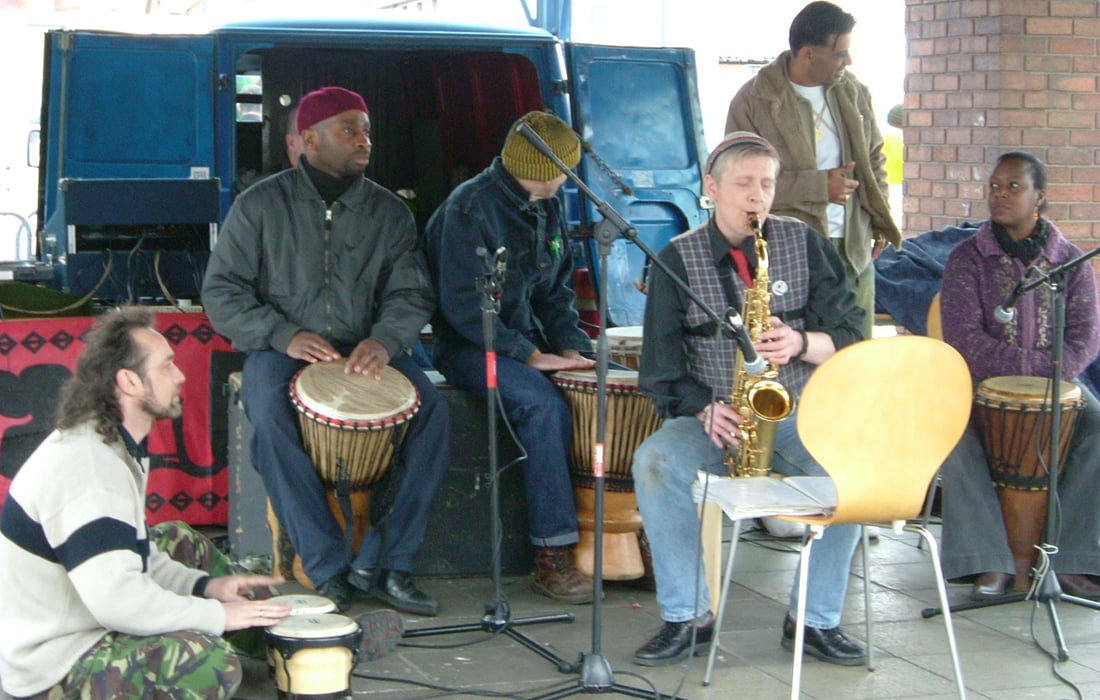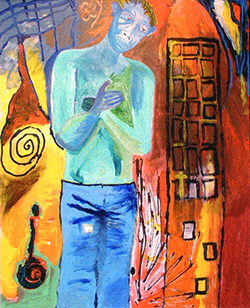
A social solution
Recent research by Theodore Stickley shows how arts projects can offer solutions to problems of identity, perception and society.
The arts have been used in therapy in the UK for many years, but it is only relatively recently that they have been utilised for mental health promotion. This is largely under the umbrella of promoting ‘social inclusion’, with a strong focus upon community arts that will promote social cohesion and the healthcare agenda. The argument goes: if we address social needs, then people may experience relief from mental distress by forming new friendships and feeling more a part of society. This is a significant shift from the use of arts for therapy. We could say that we are seeing not an increase in art therapy but therapeutic use of the arts for social development. An understanding of the specific benefits of engaging with community arts is essential if arts workers wish to engage with the ‘mental health community’. Wishy-washy notions of art as healing and raising self-esteem are not enough. Although there is no single explanation for the healing effects of art, there are hundreds of case studies published in the research literature of the health benefits of the arts. An examination of the literature reviews and reports published by Arts Council England over the years confirms this1.
The early Greeks used the terms ‘demos’ and ‘ethnos’, the former being concerned with legal rights of citizenship and the latter referring to the cultural community where people may feel a sense of belonging. The extent to which people with mental health problems could be said to be ‘socially included’ may be judged against these concepts. Work in museums and galleries could be said to belong to the demos, and promoting social inclusion through community arts to the ethnos. Promoting social inclusion for people with mental health problems is not, however, a straightforward issue. Community arts could simply be a sticking plaster to attempt to heal deep social ills. Furthermore, some may not wish to be ‘socially included’, feeling more comfortable on the margins of society. Another problem is identifying who these people with mental health problems are: it has been estimated that at any one time in Britain around one in six people of working age have a mental health problem.2
Mixed messages
The Government gives out mixed messages: on the one hand it calls for recovery and social inclusion; on the other it has introduced a coercive Mental Health Act. Furthermore, the social inclusion agenda comes hand-in-hand with the government drive to get people, many of whom have mental health problems, off Incapacity Benefits. Social inclusion may be used as a smokescreen for political ends: it is estimated that the annual cost of mental health problems in England is about £77.4bn3. It is understandable that the government is concerned with increasing productivity among disabled people, thereby reducing benefit costs. However, service users wish to avoid simplistic definitions of ‘productivity’. Additionally, it is asserted that the consequences of distorted value systems, of seeing people only as economic benefits or deficits, contributes to an erosion of the concept of mutual support within communities.
Identity and belonging
In community arts, participants are no longer patients or clients, but may become artists. Labels such as ‘writer’, ‘artist’, ‘poet’ or ‘musician’ replace the negative label ‘mentally ill’. The ‘artist’ identity implies that the person is contributing to society, whereas the ‘mentally ill’ person may be regarded more negatively, both socially and economically. In Goffman’s theory of ‘spoiled identities’, people’s identities become spoiled by society4. Coping with experiencing mental health problems such as hearing voices and deep depression may be more manageable than the subsequent effects of stigmatisation and discrimination. Thus by creating a collective artist identity, a social answer is developed to counter a social problem.

A sense of belonging has been proposed to be a basic human need5, and deficits in this sense have been linked to problems in both psychological and social functioning and closely related to a sense of safety. Positive mental health is related to a sense of social belonging. Halpern has identified what has become known as ‘group density effect’6: mental health may improve where people have a sense of belonging in a minority group that achieves some identity within the group. He asserts that, as a general rule, being a member of a group bestows psychological advantage. For people with mental health problems, it is argued that rates of admissions to hospital are reduced. Further research is required, as membership of a group limited to those who use mental health services may also increase experiences of stigma and discrimination.
The two key benefits of arts and mental health work are identity and belonging, and projects should be aiming to work to towards activities that promote such outcomes. Arts funders look for both ‘hard’ and ‘soft’ outcomes, however: belonging and identity are extremely hard to quantify in terms of outcomes.
Looking ahead
The political agenda for the social inclusion of individuals with mental health problems is a positive move towards acknowledging and acting upon the barriers to inclusion. However, apparent contradictions between the thrust of the Social Exclusion Unit and the potentially coercive nature of the new Mental Health Act in the UK highlight tensions between the policy concerns of different arms of government. The coercive nature of the Act reflects concerns about violent offences by people with mental health problems and is rooted in claims about the failure of community care.
In spite of the implementation of the Disability Discrimination Act (1995), there is still a long way to go in terms of the demos in British society; not only does inequality need to be politically dealt with, but the rights of people need to be protected by law. I conclude therefore that if the demos is dealt with, the ethnos will follow, in the same way that progress has been made with racial integration since the implementation of the 1976 Race Relations Act7.
This commodification of the arts for ‘good health’ may strengthen the argument for public funding of the arts in health promotion, but further entrenches control of the ‘product’ in the hands of those who manage public spending. Mental health promotion through community arts is best kept out of the statutory healthcare system that commodifies and systematises; it should remain firmly located in the voluntary sector but adequately funded by the statutory sector.
Theodore Stickley is Associate Professor of Mental Health at the University of Nottingham. This article is from a presentation at an Arts and Health Seminar at the University of Northampton.
w: http://www.northampton.ac.uk/artsandhealth/
Join the Discussion
You must be logged in to post a comment.